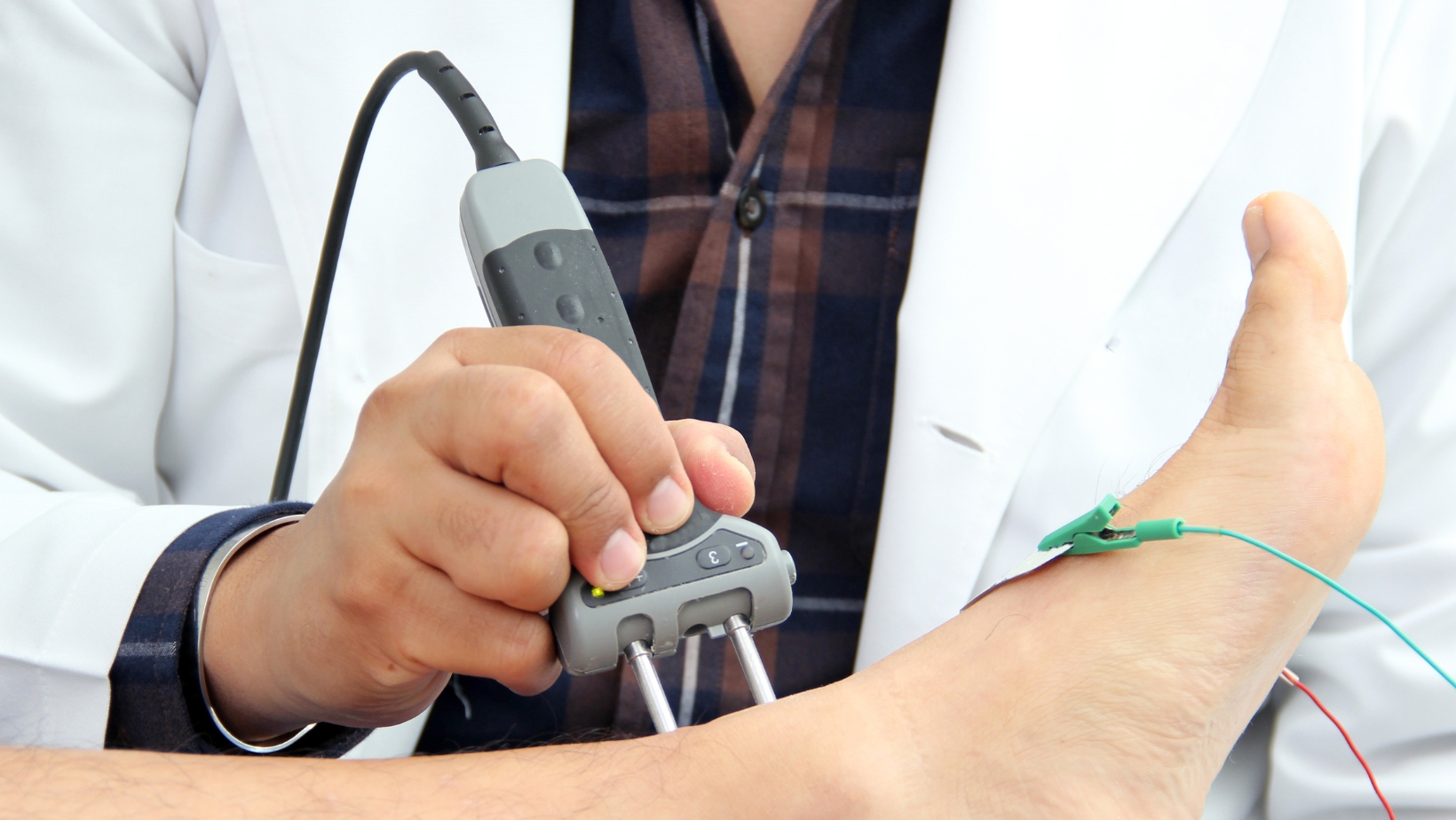
To calculate the current associated with an NCV (nerve conduction velocity) pulse, a few key pieces of information about the axon are required. Firstly, knowledge of the axon’s diameter is crucial. The diameter directly influences the resistance to current flow within the axon. A larger diameter allows for less resistance and faster propagation of the nerve impulse.
Additionally, understanding the specific resistivity or conductivity of the axoplasm, which is the cytoplasm inside the axon, is essential. This property determines how easily electrical signals can travel through the axon. Axoplasm with higher conductivity facilitates faster conduction of nerve impulses.
By combining these factors – axon diameter, resistivity or conductivity of axoplasm, membrane capacitance, and membrane resistance – it becomes possible to estimate and calculate accurately the current associated with an NCV pulse. These calculations play a crucial role in understanding nerve function and diagnosing various neurological conditions affecting nerve conduction velocities.
Additionally, another essential piece of information is the length of the axon segment being analyzed. The length directly influences both resistance and capacitance, two factors that affect current calculations. Longer segments tend to have higher resistances and capacitances compared to shorter ones.
What Information About an Axon is Required to Calculate the Current Associated With an NCV Pulse?
Factors Affecting Nerve Conduction Velocity
When it comes to measuring nerve conduction velocity (NCV), there are several factors that can influence the accuracy and reliability of the results. To calculate the current associated with an NCV pulse, it’s essential to consider specific information about the axon being studied.
Here are a few key factors that play a crucial role in determining nerve conduction velocity:
- Myelination: The presence or absence of myelin, a protective sheath around the axon, significantly affects nerve conduction velocity. Myelinated fibers conduct electrical signals faster compared to unmyelinated fibers.
- Axonal Diameter: The diameter of the axon also plays a vital role in determining nerve conduction velocity. Generally, larger axons conduct impulses more rapidly than smaller ones.
- Temperature: Temperature is another factor that affects nerve conduction velocity. Higher temperatures tend to increase conductivity, while lower temperatures may slow down impulse transmission.
 Calculating Current Associated with an NCV Pulse
Calculating Current Associated with an NCV Pulse
To calculate the current associated with an NCV pulse, certain measurements need to be taken into account:
- Stimulus Intensity: The intensity of the electrical stimulus applied to the nerve plays a crucial role in determining nerve conduction velocity. By varying the stimulus intensity, researchers can assess how different levels affect the transmission speed.
- Distance and Time Measurements: When measuring NCV, researchers record the distance between stimulation and recording sites, as well as the time it takes for an impulse to travel between them. These measurements are then used to calculate nerve conduction velocity accurately.
- Ohm’s Law: Ohm’s Law, which states that current is equal to voltage divided by resistance, can be applied when calculating current associated with an NCV pulse. By knowing the voltage applied and understanding the resistance within the axon, one can determine the current associated with nerve conduction.
Understanding these various factors and measurement techniques is essential for accurately calculating nerve conduction velocity (NCV) and determining the current associated with an NCV pulse. It allows medical professionals and researchers to gain valuable insights into nerve function and diagnose potential abnormalities or disorders affecting nerves’ health.
When it comes to calculating the current associated with a nerve conduction velocity (NCV) pulse, there are several key factors that need to be taken into consideration. To accurately determine the current, certain information about the axon must be known.
Let’s explore these crucial details:
- Axon Diameter: The diameter of the axon plays a significant role in determining the current associated with an NCV pulse. A larger diameter generally results in faster conduction and lower resistance, leading to increased current flow.
- Myelin Sheath Thickness: The thickness of the myelin sheath surrounding the axon also affects NCV calculation. Thicker myelin provides insulation and increases conduction velocity while reducing leakage of electrical signals.
- Temperature: The temperature at which measurements are taken is another important factor. Generally, higher temperatures increase nerve conduction velocity due to enhanced ion channel activity.
- Electrode Placement: Accurate placement of electrodes on the skin is critical for precise NCV calculations. Proper electrode positioning ensures optimal stimulation and recording of nerve impulses, minimizing any interference or inaccurate readings.
- Distance between Electrodes: The distance between stimulating and recording electrodes along the path of the nerve being studied is vital information for accurate calculations of NCV.
By taking into account these essential pieces of information about an axon – including its diameter, myelin sheath thickness, temperature conditions, electrode placement and distance between electrodes, as well as stimulation parameters – one can effectively calculate the current associated with an NCV pulse.
Remember that each individual case may have additional unique considerations or variables that could impact accuracy, so it’s always best to consult with a medical professional or specialist when interpreting NCV results or performing calculations related to this diagnostic procedure.

 Calculating Current Associated with an NCV Pulse
Calculating Current Associated with an NCV Pulse








